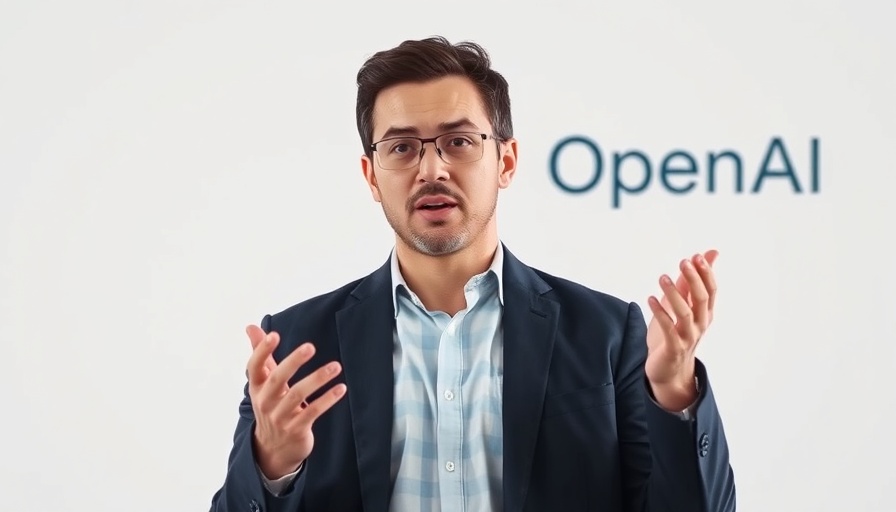
OpenAI's GPU Crunch: What It Means for AI Innovation
In a surprising announcement, OpenAI's CEO, Sam Altman, revealed that the tech powerhouse is currently "out of GPUs," which has delayed the rollout of their latest model, GPT-4.5. This update comes at a time when the demand for processing power in AI is skyrocketing, making GPUs an essential commodity. As the AI landscape continues to evolve, this scenario raises significant questions about scalability, accessibility, and the future of AI development.
The Impact of GPU Shortages on OpenAI
The delay in the release of the advanced GPT-4.5 model, which was initially limited to ChatGPT Pro users, highlights the challenges faced by AI developers. Altman indicated that the larger model is not only powerful but comes with an extensive computational cost, resulting in subscription fees that are significantly higher than its predecessor. This constraint underscores the stark reality that even industry leaders like OpenAI must navigate operational hurdles as they strive to meet user demand.
Moreover, supply chain issues affecting major chip manufacturers, particularly NVIDIA, are compounding the problem. The latest NVIDIA GPUs are difficult to procure, and this scarcity has led companies like OpenAI to rethink their reliance on external suppliers. As stated in Tom's Hardware, OpenAI is exploring the development of its own AI chips to alleviate future GPU dependency, a move that could reshape their production capabilities in the long run.
Insights in the AI Ecosystem
The reverberations of OpenAI's GPU shortage aren't confined to the company itself; they resonate across the broader AI ecosystem. Lesser-known yet crucial players like Cloud computing firm CoreWeave, which reported a whopping $1.92 billion in 2024 revenue while facing net losses, are grappling with heightened demand from AI startups. As OpenAI's reliance on GPUs represents a burgeoning market opportunity, CoreWeave and similar enterprises are forecasting growth amidst these challenges.
It is clear that the rising intensity of demand for AI capabilities is drawing attention towards GPU availability and pricing, encouraging discussions around sustainable solutions. Beyond just the immediate problems, this trend signifies a maturation of the tech landscape and highlights the need for better supply chain management to support seamless AI innovation.
Jumping on the AI Bandwagon: What to Expect Next
With AI advancements being propelled by the promise of enhanced user interactions and capabilities, the GPU predicament doesn't seem to have dimmed enthusiasm. OpenAI remains optimistic, projecting the deployment of tens of thousands of additional GPUs shortly to meet increased demand for GPT-4.5.
In tandem, existing players are expected to continue pushing the envelope, including Anthropic, which recently closed a $3.5 billion funding round, reinforcing investor confidence in AI tech. The influx of capital promises to sustain innovation while potentially easing the pressures on hardware supply chains.
What This Means for AI Enthusiasts
The latest developments signal a critical time for fans of AI. As the technology enters a new phase with increasingly powerful models, the accessibility of these tools to ordinary users is likely to change. For many, the idea of engaging with AI might soon become a reality as more robust solutions hit the market. To take advantage of this, being informed about upcoming AI news is essential for anyone interested in how these advancements will shape various sectors.
Future Trends: A Look Ahead
With OpenAI leading discussions on GPU development, the industry may see a shift towards self-reliant AI chip manufacturing. As noted in reports by Tom's Hardware and supported by OpenAI’s strategic moves, cloud services and AI processing capabilities could see a transformative change in the near future. This shift could not only ease current shortages but also dictate the pace at which AI technologies develop long-term.
For those following the evolving landscape of AI, these trends underline the importance of staying abreast of the latest developments. The intersection of supply chain resilience and technological innovation will inevitably shape our interaction with AI tools in the coming years. For more insights, keep an eye on trending AI news and expect more updates as the situation unfolds.
 Add Row
Add Row  Add
Add 




 Add Row
Add Row  Add
Add 

Write A Comment